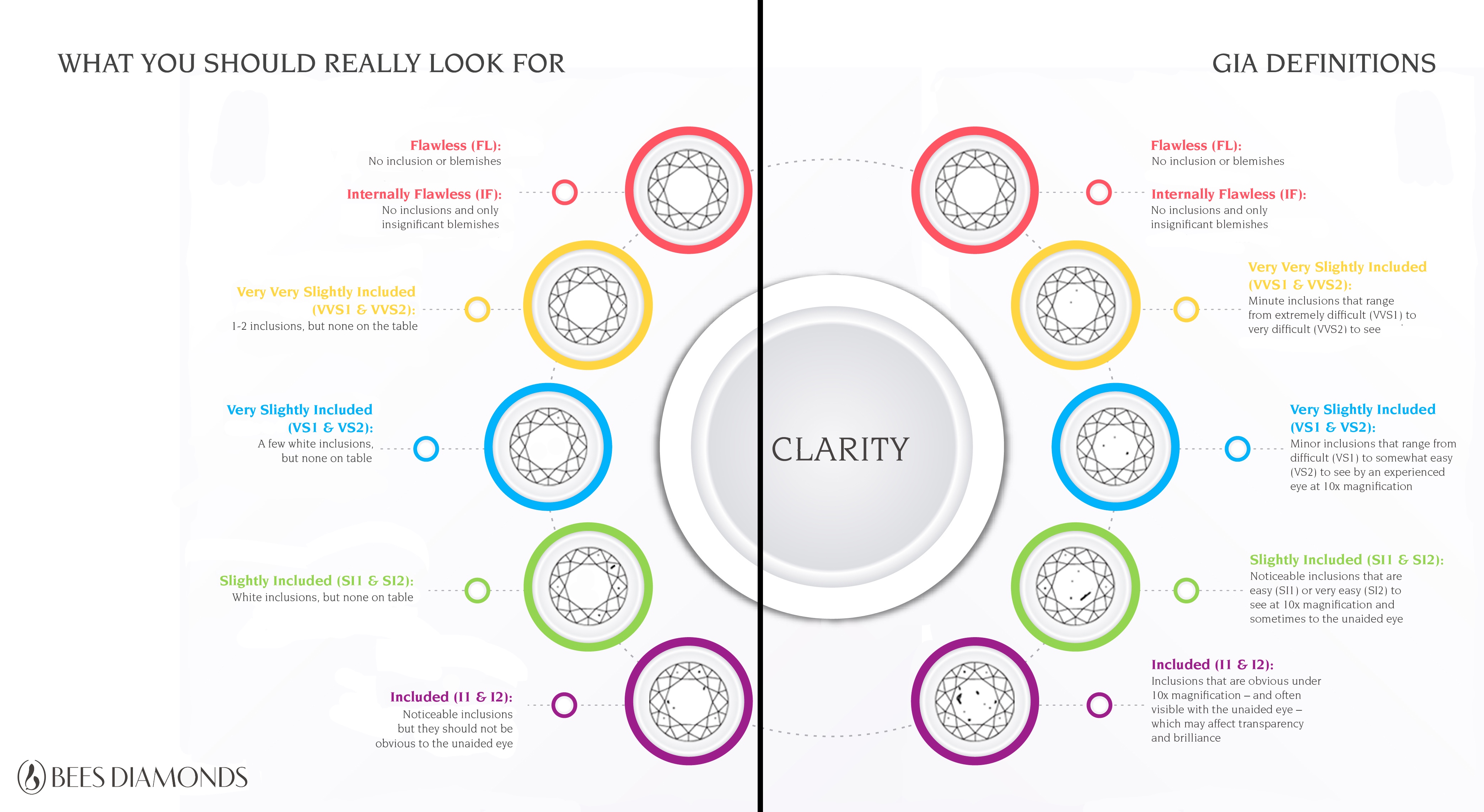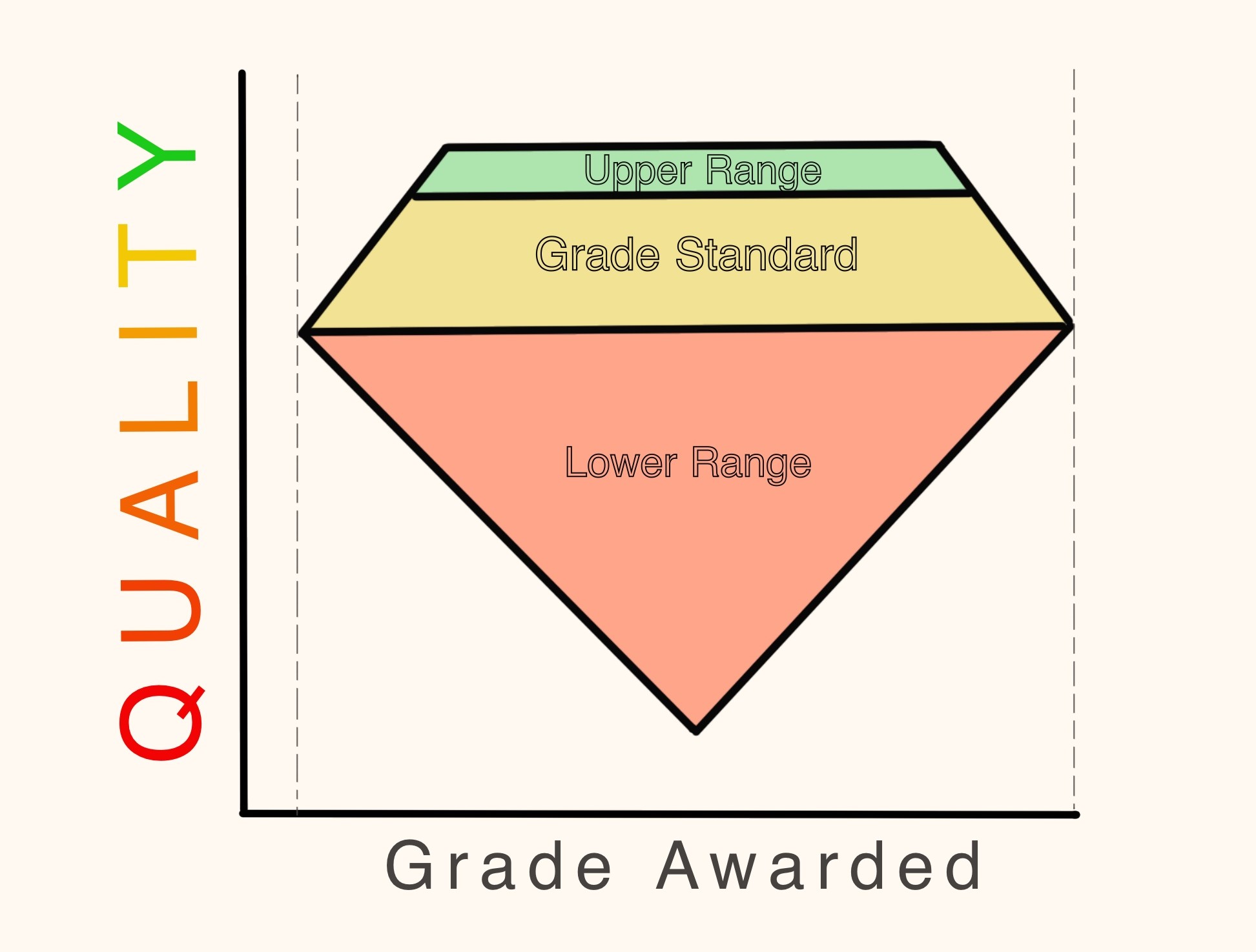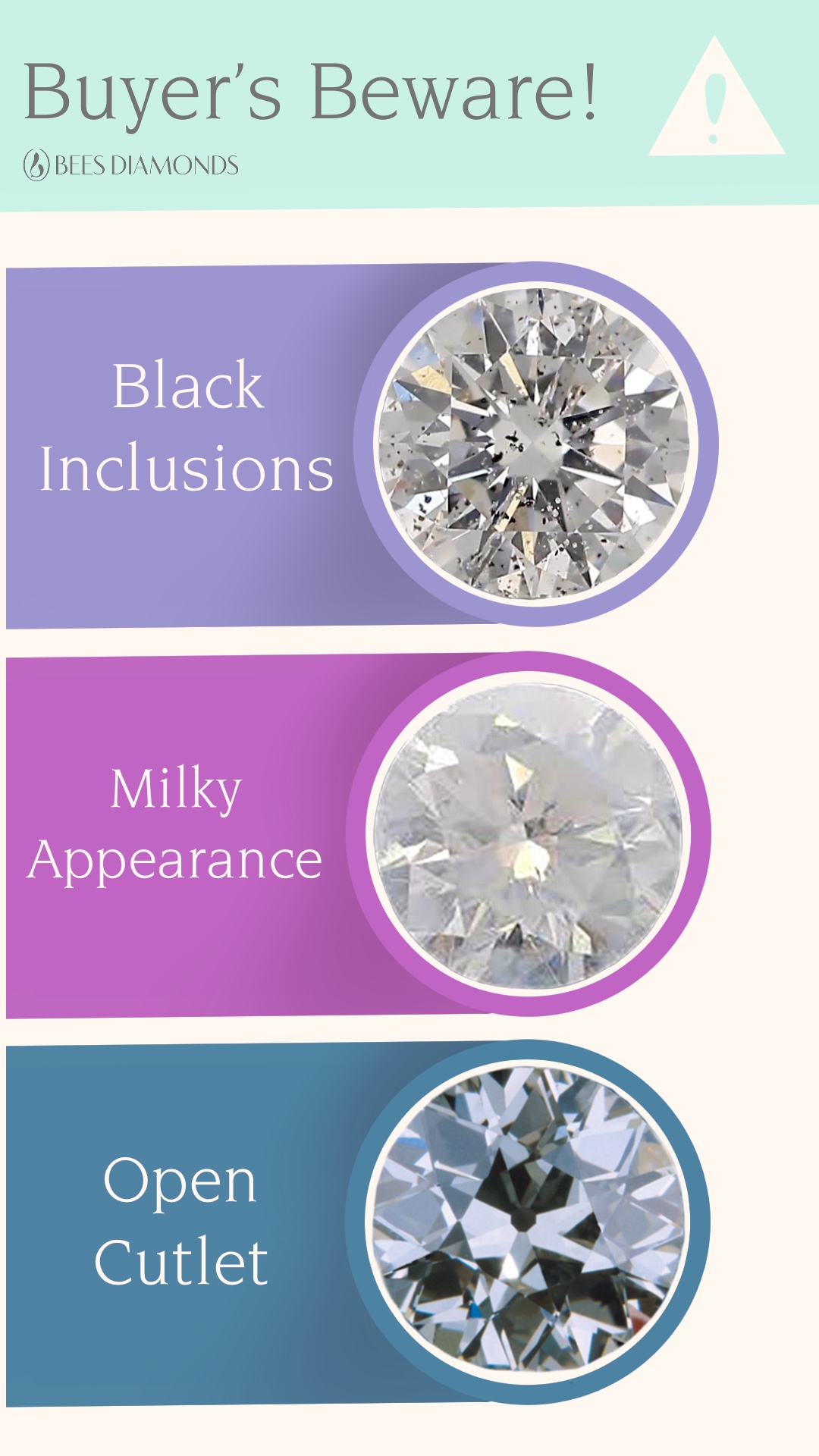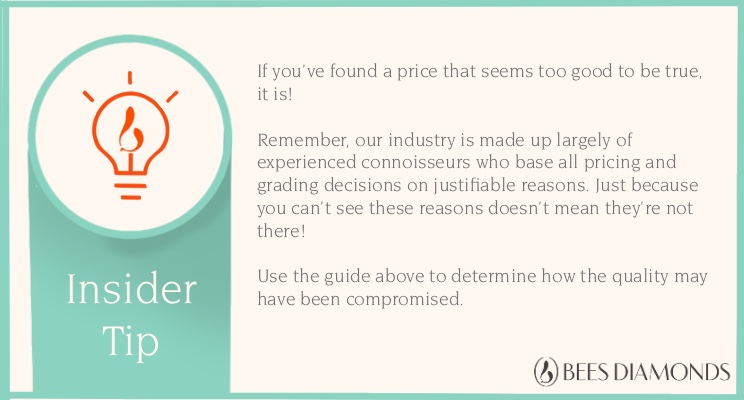Insider’s Guide to Buying Diamonds
2020 年 06 月 10 日
Insider’s Guide to Buying Diamonds
Part 1A: Clarity
Diamond jewellery will always hold sentimental value however, finding a diamond worth this value and its price is no easy feat. Today, it seems that every article, blog and website has everything and anything you need to know about diamonds, but why is this vast amount of information often conflicting? As with everything on the internet, examine the source. A lot of these blogs are written by novices who haven’t even been heard of in our industry!
As a supplier who has been curating investment-grade diamonds for over forty years, we want to clear up all the misinformation out there and write a comprehensive guide to help even the most clueless buyers navigate the 4Cs to their advantage. Part 1 of this series aims to take an in-depth look at clarity and the most common mistakes made.
Strategy 1: Compare ‘the Specs’
Firstly, recognise that every clarity grade is a range, not an absolute value. The clarity of diamond can often vary significantly within grades. In practical terms, this means that not all diamonds awarded with the same grade are comparable.
The first step to being a smart buyer is to go beyond the grade. To accurately compare diamonds, compare the characteristics, not just the grade. Listed below is what to look for in each grade.

Flawless: Expect nothing less than perfection. There should be no blemishes or inclusions anywhere.
Internally Flawless:
There should be absolutely no inclusions within the diamond but blemishes can be minimally present.
VVS1:
There should be no inclusions except for the rare pinpoint or single inclusion.
VVS2:
2-3 inclusions can be present but none should be located on the table of the diamond. No other inclusion type except for pinpoint, needle, or a shallow feather should be present.
VS1:
A few white inclusions can be present but none should be located on the table of the diamond. The only inclusion types present should be pinpoint, needle, a shallow feather, natural, or a small crystal.
VS2:
A few white inclusions can be present but none should be located on the table of the diamond. The only inclusion types present should be pinpoint, needle, feather, natural, crystal, or one small cloud.
SI1:
Some white inclusions can be present but none should be located on the table of the diamond. No inclusions should be eye-catchingly prominent under 10x magnification. Inclusion types include pinpoint, needle, feather, natural, crystal, small cloud, bruise, or internal graining.
SI2:
White inclusions are present. Only 1-2 small clouds, crystals, or internal graining should be found on the table of the diamond. Unlike SI1s, SI2s can feature twinning wisp and knot, but they should not be located on the table.
I1-I3
Read our post on the worst type of inclusions.

Strategy 2: Avoid the Lower Range
In each grade, there is a distribution based on quality. The key is to select the upper range and avoid the lower range of that distribution. Diamonds that are in the lower range will often command the price of that grade, but do not have the quality inherent of that grade. For the same reason, diamonds in the upper range naturally offer the most return for their price. You can pay the price of that grade while getting a quality higher than the standard.
The characteristics as outlined above is the best reference for that range. A diamond that does not meet the characteristics as outlined above, indicates that the stone is in the lower range. Avoid these diamonds.
 Strategy 3: Have a Baseline
Strategy 3: Have a Baseline
Across all grades, there is a common baseline that an inexperienced buyer should not go below. As much as possible, avoid these characteristics for grades above I1. These characteristics are near universally undesirable, which renders the diamond’s value extremely difficult to uphold. These diamonds are commonly sold online to first-time buyers not educated on the difference. They are misguided into believing they have found a good deal but they are in fact, overpaying.
Black Inclusion in Diamond:
Black inclusions are not desirable across any grade. They are much more visible than white ones. But besides being aesthetically repulsive, black inclusions block light refraction and negatively affect a diamond’s sparkle.
The most common lie on the internet is that black inclusions are no worse than white if its eyeclean. In fact, this is simply not reflected in the prices. Even the existence of minute black can make a big indent to price. The reason is that diamonds with black inclusions are worth much less than its listed price because they are in the lowest range of its grade. You should not have to pay for black inclusions.
Milky Diamond:
There is actually an industry term for the baseline acceptable quality for diamonds - “No BGM”. This is short for no brown, green, or milky. That should give you an idea of how worthless milky diamonds are!
When a diamond has large clouds or a cluster of small clouds, it can lose its sparkle because light refraction has been obstructed. What results is a stone that barely resembles a diamond, forming a cloudy appearance that looks like milk.
While milky inclusions are immediately obvious in-person, there is no way to tell if the diamond is milky from a certificate or video (unless it is extremely milky). The size and extent of clouds on a GIA certificate is not described. But you can look for “Additional clouds may not be shown” in the comments section of the report. For certain grades, this can be a high indicator of a milky and cloudy diamond.
Open Culet:
Lastly, do not accept diamonds with an open culet. The ideal diamond is pointed, with no additional facet at the bottom tip of the diamond. This is read in the certificate as “None”. Unless your diamond is an Old Cut, it should not have an additional facet at the culet. If you read “Very Small” to “Very Large” in the certificate, beware! Diamond cutters rarely cut culets anymore unless they must.
What about Engagement Rings?
Couples just beginning their search for an engagement ring often make the mistake of overlooking quality in an imbalanced preference for size. But before giving into that quick temptation, remember what an engagement ring is for! This significant purchase is not just for a momentary happiness, but rather, a timeless choice. If the value of something cannot stand the test of time then it’s not worth your high emotional investment, nor the heavy price tag to begin with!
Another consideration young couples should have is for their future family. It is worth remembering that every major purchase from this point forward, will be your family’s future and shared asset. A diamond that cannot uphold its value will be of little worth to the future generations of your family.










